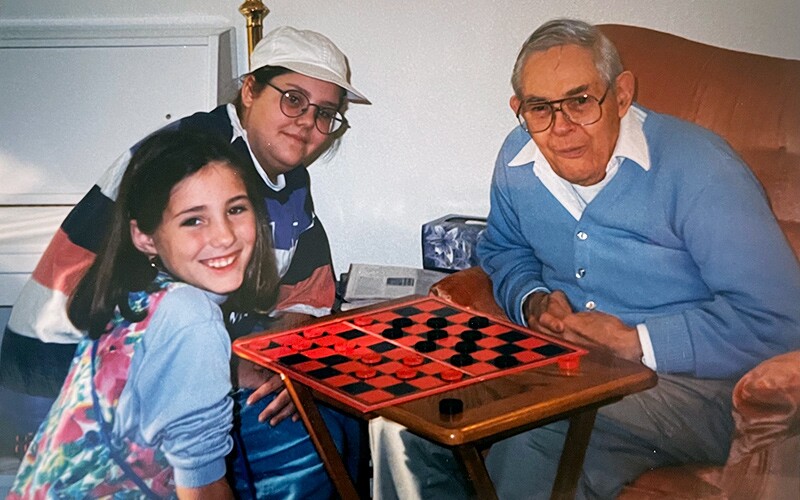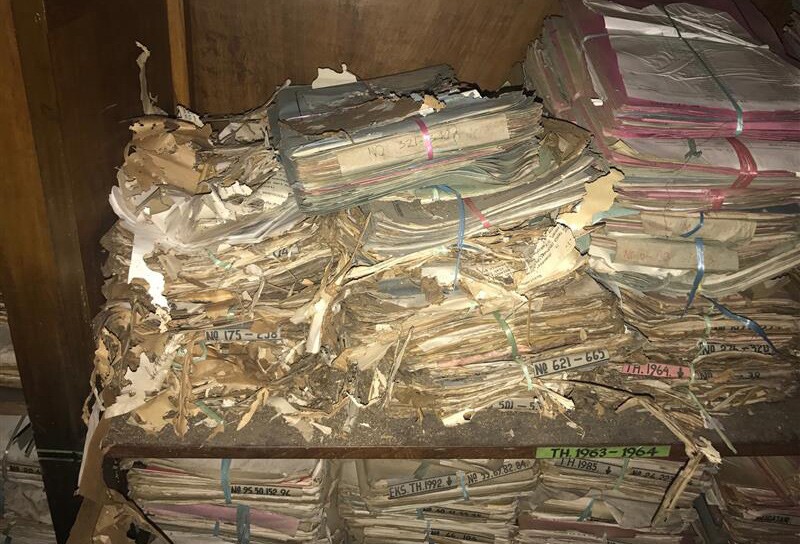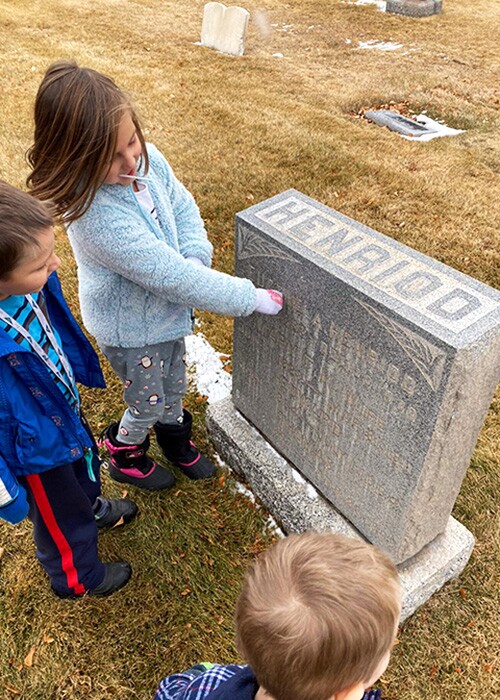Records—those bits of paper, parchment, even papyrus—are where the vital facts of people’s lives are preserved. Birth dates, parents, marriage dates and partners, death dates, and other clues to what an individual did while navigating his or her life are part of the huge mosaic that fuels genealogical research.
Records are tucked away in government archives, church archives, and even in people's homes, such as in family Bibles and the individual memories of those now living. Today, enormous electronic collections make much of this information available wherever you are—but there are always more records to add.
Wherever these records lie, it’s Whitney Peterson’s job to ferret them out, identify them, classify them, and recommend the records for negotiation. The records are then digitized, indexed, and added to FamilySearch’s online record database, which are available to genealogy researchers throughout the world.
Whitney Peterson's Early Love of Family History
Whitney Peterson is one of 15 people in FamilySearch whose specific assignment is to find, identify, classify, and recommend records. Her title? Content strategist.

Whitney worked with a commercial genealogy company 9 years ago before she came to FamilySearch. She was finishing school and doing other jobs when she learned there was an opening in FamilySearch but wasn’t sure her background qualified her for the position. With the encouragement of a friend, she applied. “I definitely was placed where I belong,” Peterson said. “I want to preserve the records of as many [people] as possible.”
Peterson gained some experience in family research while a student at Brigham Young University. She drew on her family background and Nordic experience to study Danish, and from there to sharpen a focus on family history was an easy step. Peterson’s desire to study her family history was sparked early in her life through the work her grandfather did. Seeing the long list of ancestor's names sparked her lifelong interest in those who had gone before and who she was because of them. Visits to cemeteries, where wonderful life stories lie beneath the headstones, also fed her interest.

The Process of Record Keeping
Finding and Identifying Records
While FamilySearch has many records available to the public online, those records don’t just appear in the database. Someone has to go through all the piles of records at archives to make them available on FamilySearch.
Records can be found at a number of archives, including National, regional, state, county, private collections, and university archives. Whitney Peterson’s job is to sort through these records and pick out which ones contain genealogical records that contain vital information about our ancestors. Some archives hold records she already knew about, but some archives hold unique record types for that locality—like fishing licenses.

Sometimes there are great online resources and catalogs that contain information about the records held at an archive. But often, they don’t. Often Whitney and her team travel to visit the archives in person. They spend hours at these archives requesting records, sitting in reading rooms, and researching. Sometimes they get to go to the back of the archives where all of the records are stored to review them there.
“Whether we research online, research at the archive, or speak with the archivists directly, our goal is to understand why the record was created, who created it, what portion of the population it would cover, what vital information the record contains, and how many potential indexed records we can get from the record,” Whitney explained.
As part of identifying what records exist, Whitney also identifies indexes and compiled trees that have already been created by credible groups and societies.
“I’ve researched in some of the largest, most advanced archives,” Whitney said. “In small, humble offices where records even from the 1970s are deteriorating for lack of archival preservation, and even in some countries where the only records we could view were those that belonged to individuals.”
Classifying and Recommending Records
As Whitney collects this information for different record types and what information the records provide, she classifies them based on the depth of information in the records that would help to uniquely identify an ancestor as well as the population percentage the record covers. For example, a census that covers essentially 95% of the population with 7 pieces of vital information will be classified higher than a collection that contains 15 pieces of information but only covers 10% of the population.
Classifying records helps Whitney to create recommendations for the team who actually signs agreements with those archives and agencies to take pictures of their records for preservation and online publication.

Sometimes the very best record types no longer exist because of war, natural disasters, or intentional destruction. Sometimes the very best record types are restricted due to data privacy laws. And sometimes FamilySearch isn’t able to sign agreements for the very best records—whether due to corruption or a desire to protect the privacy of those listed in the records.
All of these issues impact which records are recommended over others. The goal is to make enough of the very best records, or “top tier” records, available online for every country so anyone researching could trace their ancestors. If the highest quality records don’t exist or aren’t accessible, her team digs to find the best records available.
The Positive Influences of Family History in Whitney Peterson's Life

The work in which Peterson is engaged has positive influences on the lives of those involved in the process. She recalls the story of one of the volunteers who was enlisted to help in the record collecting in Spain. The woman was of Scottish descent but was lukewarm about trying to find the connections on one side of her family because her relationship with her father was less than ideal.
Whitney helped the volunteer to find documents about some of the other family members on that side of her family. Whitney said that as they talked about the importance of finding and connecting family members together, "I think some family healing occurred for both of us."
Stories like these help Whitney find fulfillment in her work, although the work she and others do will take decades to complete. Her job positively influences her own life by giving her the chance to connect with her family—living and deceased. She enjoys planting the seeds of interest for future generations by sharing entertaining ancestor stories with nieces and nephews, visiting cemeteries, and visiting other historical sites relevant to her family history.
Whitney is also motivated by the notion that the work she is doing helps millions of people who are searching for clues about their ancestors daily. She helps strategize which records to bring to light on the internet next, which fuels countless individual discoveries at FamilySearch. The next time you find a family member in FamilySearch’s record collections online, you now know one of the faces on the team that helped facilitate your discovery!

